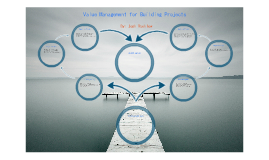project management presentation
Transcript: Methodology New era Successors of Frederick Winslow Taylor Frederick Taylor in his work, “The Principle of Scientific Management”, give us a description of how the implementation of scientific methods to the management of workers, can help us improve the productivity. The 2 main scientific methods, Taylor implement to study the problems of administration are the observation and measurement of the factors. Objectives Frederick Winslow Taylor provided the basis for further conceptual development. Taylor principles lead to the Scientific Management of Business, creating a school of thought that later would be called as Taylorism . Its development was based on the observation of differences in worker productivity , which found due to several causes , such as differences in talent , intelligence, or motivations. He was one of the first to notice the existence of these differences , analyze and define aimed at improving profit improving efficiency and standardizing processes methods. Company basing on the doctrines of Taylor, began monitoring their workers in this study were conducted, three aspects were considered: • Time to perform a task. • Number of tasks the worker do. • How motivated was the worker. Conclusion Case This work structure is separated into different phases (evaluation of technical feasibility and economic-financial , planning, implementation , closing and control) to optimize the use of resources while minimizing the risks REVIEW OF RELATED LITERATURE CONCLUSION A company dedicated to the commercialization of sacks of flour in Venezuela, known under the name of “Harina P.A.N”, wanted to optimize performance. The business problem was that the effectiveness of its workers was declining, compared to past months. Frederick Winslow Taylor Ancient era Jusification of the investigation The beginning of project management Project Management will give impetus to their theories and design tools to transform the way we understand the process. The purpose of management is to coordinate all available resources to achieve certain objectives, this implies the interaction between knowledge, technology, environment, structures, processes, services and products. In this sense, management solutions and project management (methodologies, techniques, technologies, models, tools) must support the project management process. This process in turn should be successful, based on reasonable principles. The first, designed a tool for monitoring and recording the progress of the work at different stages of project planning : it the diagram Gantt Wal-Mart's Global Expansion in Mexico. COLLECTING DATA TECHNIQUES THEORY ON THE RESEARCHING It is clear that not all workers in the company have the physical capacity to load 25 tons per day, you could say that only one eighth of workers could. This case suggests that workers should be able to do engage in this particular activity, the loading sacks of flour, the other should be placed in jobs commensurate with their abilities. Learn how project management works The two American moon landing : Neil Armstrong and Edwin Aldrin. The birth of the ARPANET. the French mining engineer Henry Fayol , developed the first modern theory of management , defining six primary functions of management which are still valid : 1.Forecasting 2.Planning 3.Organizing 4.Commanding 5.Coordinating 6.Monitoring. The mythical construction of Noah's ark and the construction of the Egyptian pyramids. Identify each one of the steps of the project management cycle and how does each one works for the achievement of the project. How project management can be used for a correct management of the staff getting a better performance in the work that they do. The project management works in a way that, we can program in an efficient way different tasks that are carried out during different phases on the project. Identify some barriers that we can find in the implementation of a project. Show how a project management can be success for the achievement of our objectives. RECOMMENDATIONS

















